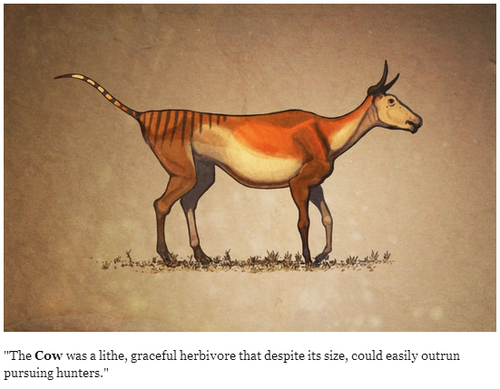First things first: the song of the week
Elsewhere in science news, I really enjoyed this article about lizards who find their way home by a still unknown mechanism (especially all the weird ways scientists have tried to rule out various answers)
Then the researchers created caps with pieces of Ping-Pong ball, and attached them with surgical glue and cork as a cushion, to the heads of the anoles to interfere with polarized light that might reach an organ in the brain called the parietal eye. Some research has shown that lizards can detect polarized light with that organ, not with their regular eyes.
The team didn’t just block all light to the parietal eye, because it controls the daily rhythms of the lizard. Block it completely, Dr. Leal said, and “after a day they just stop moving.” They are normally quiet at night. If it is always night for them, they stay quiet.
And how did the lizards do with the Ping-Pong ball hats?
They came back. Same percentage. Same time period.
One of my friends spotted a great critique of a flaw in the way dinosaur bones have historically been extrapolated to dinosaur flesh:
At the end of All Yesterdays (the extremely good book about imagining and illustrating dinosaurs in complex speculative ways i was talking about yesterday) there’s a section where they prove the point about the fact that we need to be more open to imagining skin coverings and fat/cartilage deposits by illustrating modern-day animals as if a nonhuman paleontologist from millions of years in the future reconstructed them using the just-skin-stretched-over-the-skeleton-and-muscles method that unimaginative paleoartists use with dinosaurs
Here’s one of the pictures (and there are more at the link). Behold, the majestic, svelte cow!
Speaking of reenvisionings, Noah Millman has a fascinating review of a Taming of the Shrew that played the conflict between Kate and Petruchio so straight that Millman felt sick. He wound up writing a meditation on what it takes for Shrew not to be brutal.
But that play, to my mind, is itself more complex than it appears on the surface, a genuine and touching love story that Shakespeare deftly hides inside, and uses to explode, a genre – the “shrew play” – about a husband with a hectoring wife. I say explode because Kate is as atypical a shrew as Hamlet is a avatar of revenge. Just as Hamlet, far from cleverly plotting his vengeance (as in the original source material), instead comments obsessively on his inability to take it, Kate, far from hectoring, haranguing and trying to control her husband, is enraged by other men’s efforts to control her, and bitter about her inability to attract anything resembling affection from anyone in her life. This is not the story of a man getting out from under the thumb of a domineering woman, and turning the tables on her, but of a man choosing a difficult woman whom nobody else sees the virtue of.
And then, yes, schooling her in how to live with him. There is no way around the profound power differential implied by that schooling, and I can fully understand why that stings for many women, notwithstanding that Shakespeare also wrote plays (e.g., As You Like It, The Winter’s Tale) where a woman puts a man through schooling necessary for him to be a fit companion. My experience of most good productions of Shrew, though, is akin to my experience of “The Philadelphia Story” – that is to say, I’m aware of the power differential between the female lead and her male “tutor,” and aware that her schooling is painful, even cruel, and that all of this is problematic. But I’m also aware of a real, mutual love, and a sense that his love is for this woman, at her best and most authentic; that the story isn’t about breaking her spirit but freeing it from its self-imposed bonds; and that the point isn’t that she should become meek and subservient but – well, yar.
This article on Esperanto came very close to getting me to sign up to study it on Duolingo.
Like its vastly more successful digital cousins — C++, HTML, Python — Esperanto is an artificial language, designed to have perfectly regular grammar, with none of the messy exceptions of natural tongues. Out loud, all that regularity creates strange cadences, like someone speaking Italian slowly while chewing gum. William Auld, the Modernist Scottish poet who wrote his greatest work in Esperanto, was nominated for the Nobel Prize multiple times, but never won. But it is supremely easy to learn, like a puzzle piece formed to fit into the human brain.
Americans do wind up having a much easier time with Esperanto than with Arabic names. Ivan Plis wrote a post “Nobody in the News Knows How Arabic Names Work” that delivers on its promise.
The mix-up over Saad bin Laden wasn’t the only recent failure to provide a basic understanding of Arabic. After special forces killed an Islamic State operative last weekend named “Abu Sayyaf,” outlets including CNN, The New York Times and the Washington Post all misrepresented the jihadi’s nickname.
“Abu Sayyaf” is a single name, called a kunya in Arabic. “Abu” here means “father of,” and Sayyaf is a male name that means “swordsman.” Arabic speakers use kunyas as a respectful name referring to one’s children: Palestinian leader Mahmoud Abbas is sometimes called Abu Mazen, for example, after his firstborn son, Mazen.
Some terrorists also use kunyas as symbolic nicknames to raised their credibility as warriors. The female equivalent is “Umm,” meaning “mother of.”
Individually, “Abu” and “Sayyaf” are not names that make sense. But The New York Times’ original article on the raid called the terrorist “Mr. Sayyaf,” as though Sayyaf were his last name. The Times issued a correction after TheDCNF pointed out the error.
In “One Minute Time Machine,” the protagonist has a solution to all forms of embarrassment and missteps (which might be a comfort to the people corrected by Ivan above. This short was a delight (and not just for the reasons you think) and I’ve been making all my friends watch it.
For more Quick Takes, visit Conversion Diary!


















